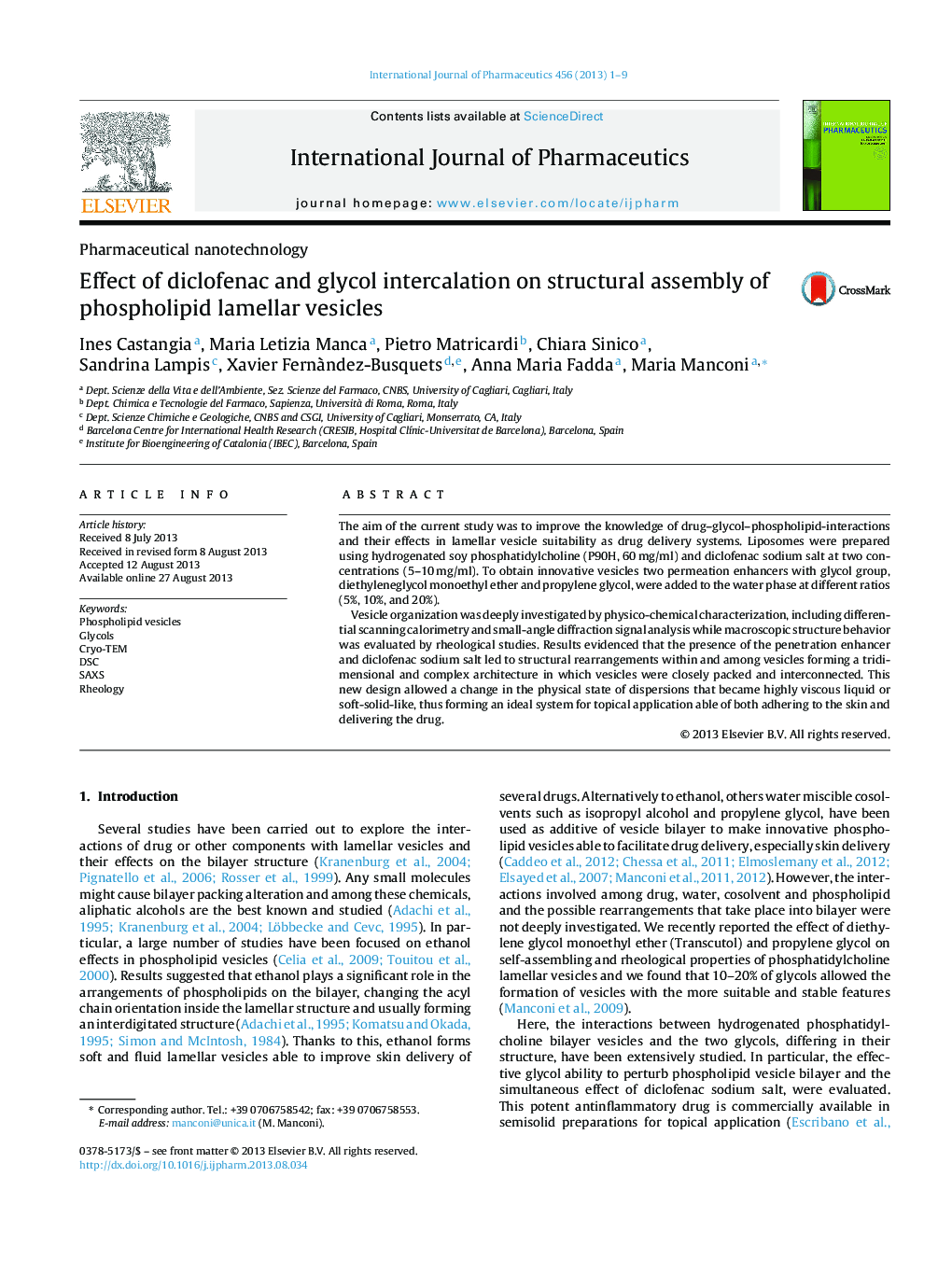| Article ID | Journal | Published Year | Pages | File Type |
|---|---|---|---|---|
| 5820011 | International Journal of Pharmaceutics | 2013 | 9 Pages |
Abstract
The aim of the current study was to improve the knowledge of drug-glycol-phospholipid-interactions and their effects in lamellar vesicle suitability as drug delivery systems. Liposomes were prepared using hydrogenated soy phosphatidylcholine (P90H, 60Â mg/ml) and diclofenac sodium salt at two concentrations (5-10Â mg/ml). To obtain innovative vesicles two permeation enhancers with glycol group, diethyleneglycol monoethyl ether and propylene glycol, were added to the water phase at different ratios (5%, 10%, and 20%).Vesicle organization was deeply investigated by physico-chemical characterization, including differential scanning calorimetry and small-angle diffraction signal analysis while macroscopic structure behavior was evaluated by rheological studies. Results evidenced that the presence of the penetration enhancer and diclofenac sodium salt led to structural rearrangements within and among vesicles forming a tridimensional and complex architecture in which vesicles were closely packed and interconnected. This new design allowed a change in the physical state of dispersions that became highly viscous liquid or soft-solid-like, thus forming an ideal system for topical application able of both adhering to the skin and delivering the drug.
Related Topics
Health Sciences
Pharmacology, Toxicology and Pharmaceutical Science
Pharmaceutical Science
Authors
Ines Castangia, Maria Letizia Manca, Pietro Matricardi, Chiara Sinico, Sandrina Lampis, Xavier Fernà ndez-Busquets, Anna Maria Fadda, Maria Manconi,
